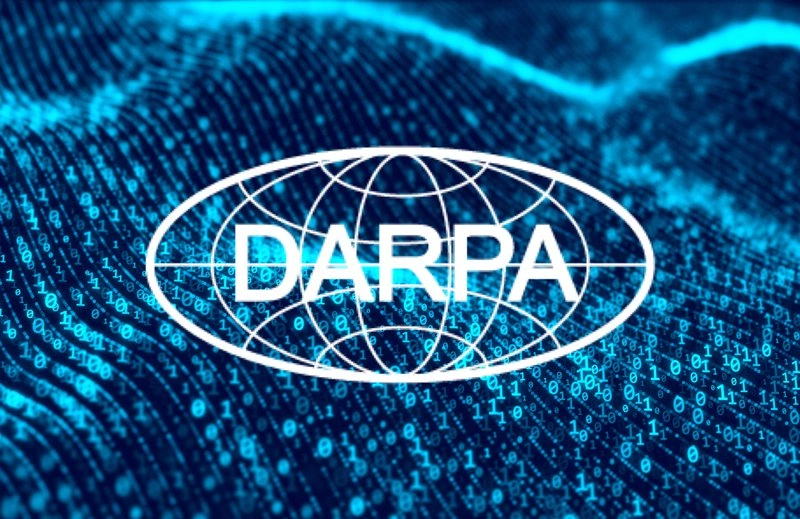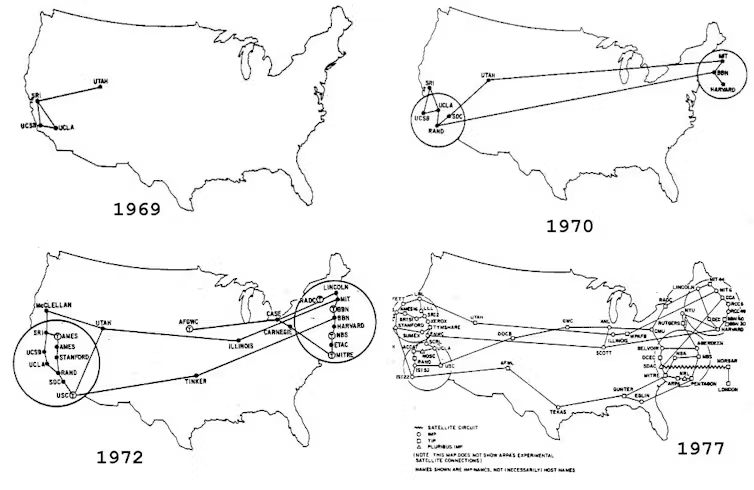 DARPA and AI
DARPA and AI
Called "the agency that shaped the modern world", DARPA brought us AI labs, robotics, drones, the Internet, GPS, and much more
Related: History of AI | AI Research
Following the Dartmouth Conference, DARPA, a little known government agency, powered American technology, including AI, for over thirty years. It happened during a period known as the Cold War.
The Cold War period was a fascinating era, roughly the late 1950s to the late 1980s, when AI's early optimism met geopolitical stakes. Seen from the vantage point of American technology, the period can be encapsulated simply; Sputnik went up in the late 50s and the Berlin wall came down in the late 80s. In between, DARPA fueled American technology, ushering in AI labs, robotics, drones, the Internet, weather satellites, GPS, stealth technology, and much more.

 The Story of DARPA
The Story of DARPA
Think of it as the first DOGE. It was lean and authorized to take risks.
Unlike DOGE, which was staffed to cut costs, DARPA was created to fund high tech projects. The structure was small and agile and funded to tackle high-risk, high-reward projects that push tech boundaries. These were projects too wild or speculative for conventional military and commercial research and development groups. DARPA didn't invent AI, but it turbocharged the field post-Dartmouth era with cash, vision, and military goals that over time turned into commercial windfalls.
DARPA is an acronym for the Defense Advanced Research Projects Agency. It was established on February 7, 1958, by President Dwight David Eisenhower, former five star General of the Army and hero of World War II. DARPA was the American response to the Soviet launch of the Sputnik satellite in October of 1957. DARPA was created to ensure America stayed ahead of the USSR in leading-edge technology.
"DARPA artificial intelligence (AI) programs have emphasized the need for machines to perceive and interact with the world around them; to frame problems and to arrive at solutions and decisions based on reasoning; to implement those decisions, perhaps through consultation with a human or another machine; to learn; to explain the rationale for decisions; to adhere to rules of ethical behavior defined for humans; to adapt to dynamic environments; and, to do all of this in real-time. In short, DARPA has always been interested in AI frameworks that integrate AI and computer science technologies, and the application of those frameworks to DARPA-hard problems. "
Right after its founding, DARPA latched onto AI as a strategic asset. By the early 1960s, it was bankrolling key university labs--MIT, Stanford, and Carnegie Mellon--where Dartmouth attendees and AI leaders like McCarthy, Minsky, and Newell/Simon worked. MIT's AI Lab (founded in 1959) got DARPA grants to explore symbolic AI and perception with grants of tens of millions of dollars (adjusted) spread over decades. Post-Sputnik, DARPA pushed AI for Russian-to-English translation to decode Soviet intelligence. Early efforts in the 60s were crude and rule-based, not fluent, but they laid the groundwork for technologies like natural language processing.
Early DARPA funded, AI-infused projects included:
- MIT's "Machine-Aided Cognition" (later called simply the AI Lab), backing time-sharing systems, and conducting AI research. This birthed MULTICS, a precursor to the UNIX operating system, and supported McCarthy's work on LISP.
- At Stanford Research Institute (SRI), DARPA funded Shakey the Robot, the first mobile robot with AI. It used cameras, sensors, and planning algorithms to navigate rooms, which was a huge advance for robotics and computer vision. The cost was $750K ($5M today).
 DARPA and the Internet
DARPA and the Internet
The Story of ARPANET, TCP/IP, and the World Wide Web
DARPA didn't set out to invent the internet as we know it, but it did create ARPANET, the first network that evolved into today's world wide web. This happened during the Cold War, driven by military needs and technical brilliance.
DARPA's Information Processing Techniques Office (IPTO), led by J.C.R. Licklider from 1962 to 1964, dreamed of "intergalactic computer networks." Licklider's 1960 paper "Man-Computer Symbiosis" advocated connected machines, and became the driving concept.
Robert Taylor took over IPTO and advocated using separate terminals for each computer and linking them together. To connect the dots, Paul Baran (RAND), Donald Davies (UK), and Leonard Kleinrock (MIT/UCLA) theorized using "packet switching"; that is, breaking data into packets sent independently and reassembled at the destination. Taylor proposed ARPANET to DARPA boss Charles Herzfeld in 1966 and received $1M (~$9M today) in a quick, twenty minute meeting.
Connecting four universities--UCLA, Stanford Research Institute (SRI), UC Santa Barbara, and Utah--became the initial pilot project. The hardware for the project consisted of Interface Message Processors (IMPs), built by BBN Technologies. These were mini-computers used to route packets. The goal was to share computing resources and test resilient networking.

The first link on October 29, 1969, did not go well. UCLA's Kleinrock sent "LO" to SRI (meant for "LOGIN") and the system crashed after two letters. The first ARPANET message was thus humble and buggy, albeit historic. The bugs were squashed and by December 1969, all four nodes were live. Packet switching worked and data hopped between IMPs, not reliant on any one line. Early ARPANET used the Network Control Program (NCP) protocol. The TCP/IP protocol came later.
ARPANET grew rapidly in the 1970s and 1980s. In 1970, ARPANET hit 13 nodes, adding MIT and the Rand Corporation on the East Coast. In 1972, email and file transfers to 40 machines was demoed to an enthusiastic crowd. The first international link was setup between University College London and Norway in 1973.
Transmission Control Protocol/Internet Protocol (TCP/IP) was developed by Vint Cerf and Bob Kahn, funded by DARPA, and implemented in 1983 to fix packet-switching flaws and enable diverse networks to connect to ARPANET. Once ARPANET switched to TCP/IP, the internet's backbone was born. Even with TCP/IP, ARPANET wasn't "the internet" until Tim Berners-Lee, a British scientist working at CERN, created the World Wide Web (WWW) in 1989. Extending the ARPANET concept, the Web was originally conceived and developed to meet the demand for automated information-sharing between scientists in universities and institutes around the world. Soon, it served the entire world.
 Links
Links
defenseone.com/technology/2024/03/big-ai-research-darpa-funding-year/394924/
ojs.aaai.org/aimagazine/index.php/aimagazine/article/download/5294/7228
youtube.com/watch?v=2ECAZgSmXho Inside DARPA's Latest Ventures
darpa.mil/research/programs/ai-next
darpa.mil/research/programs/explainable-artificial-intelligence